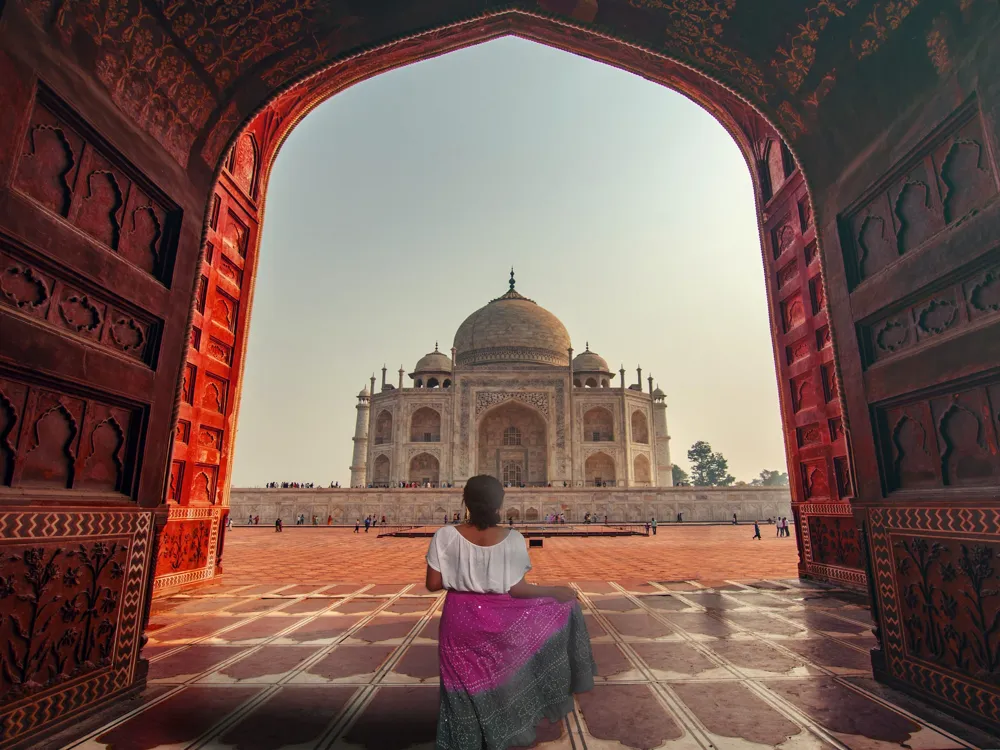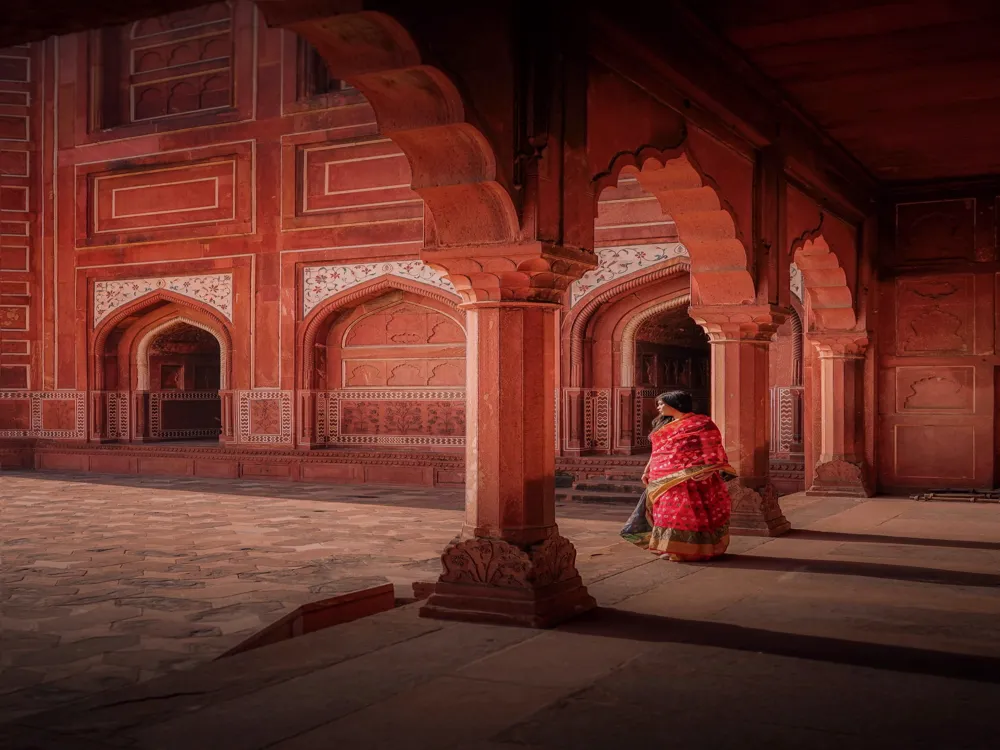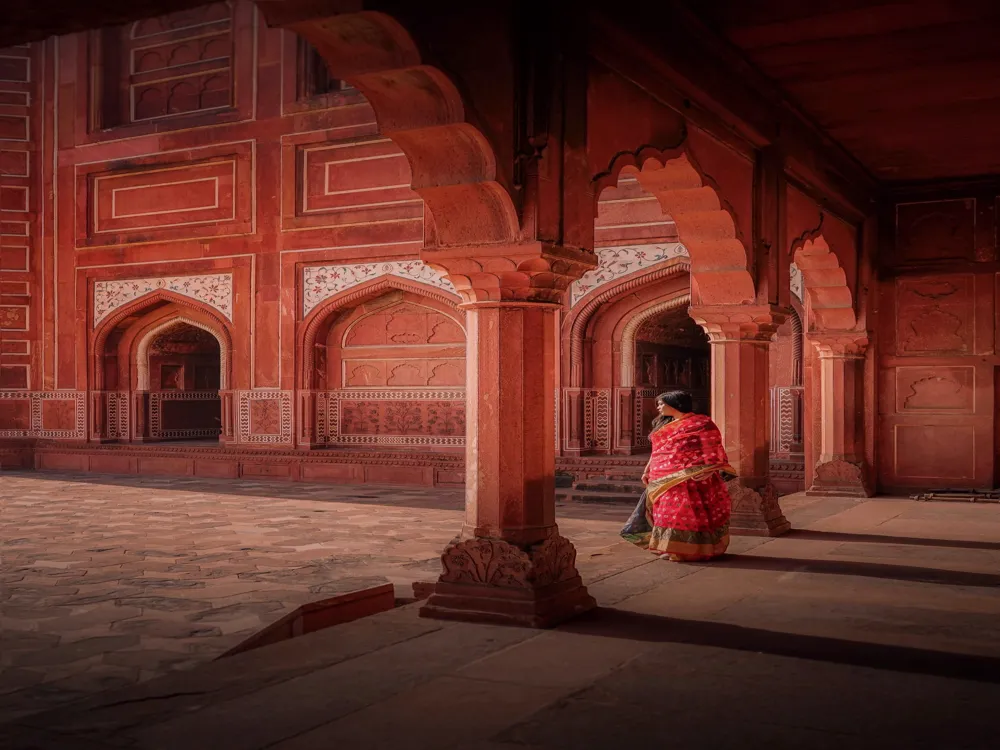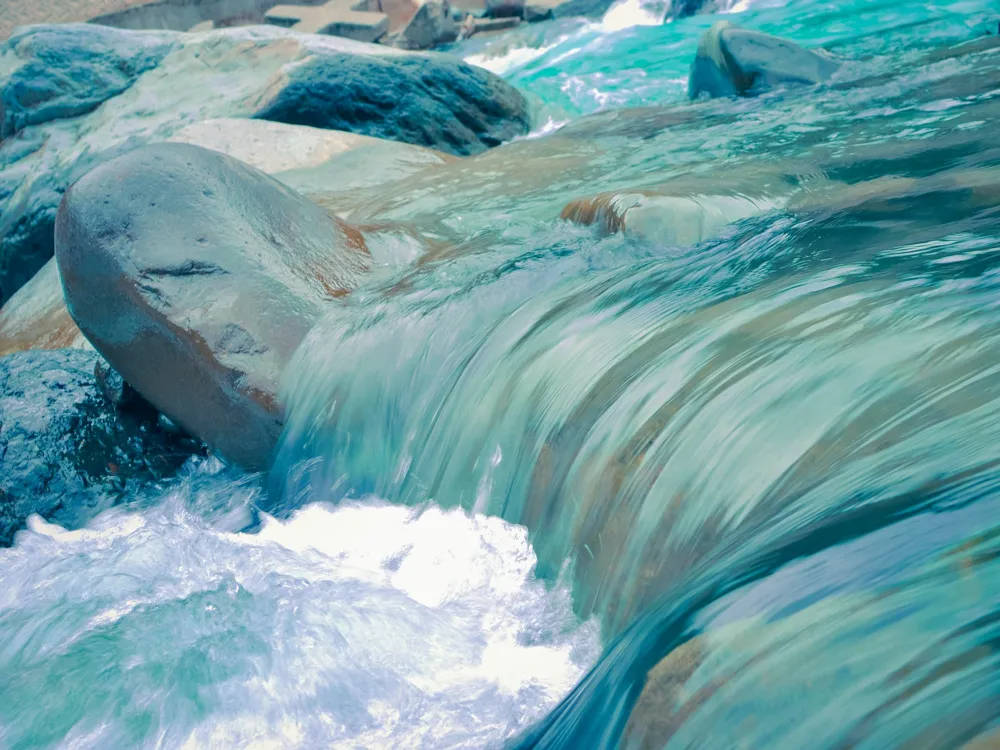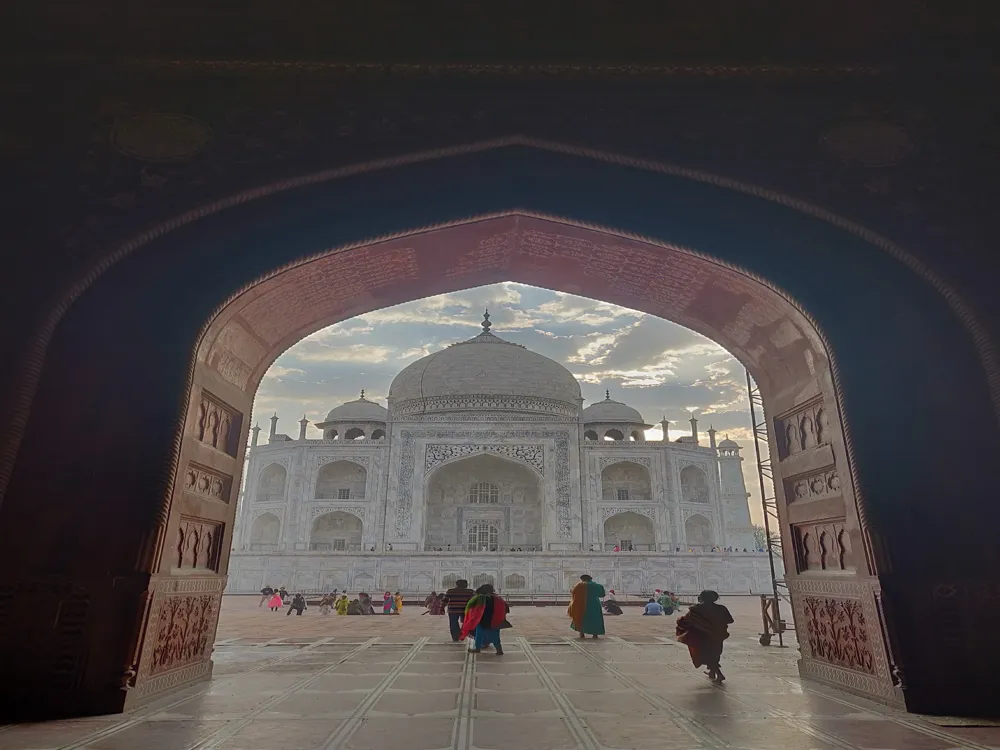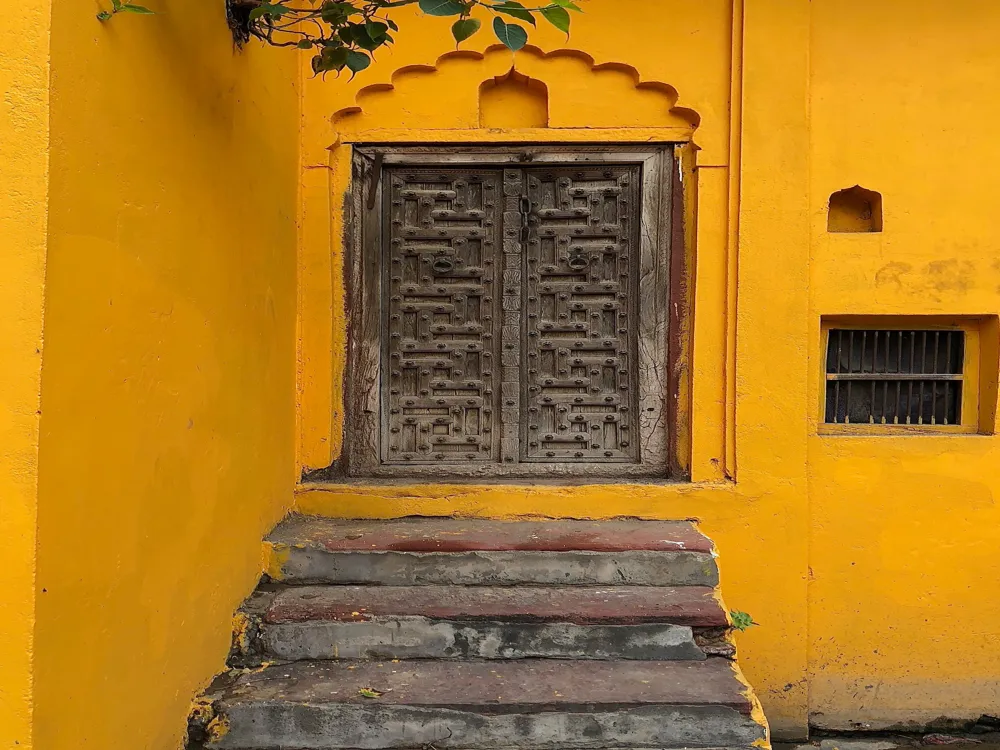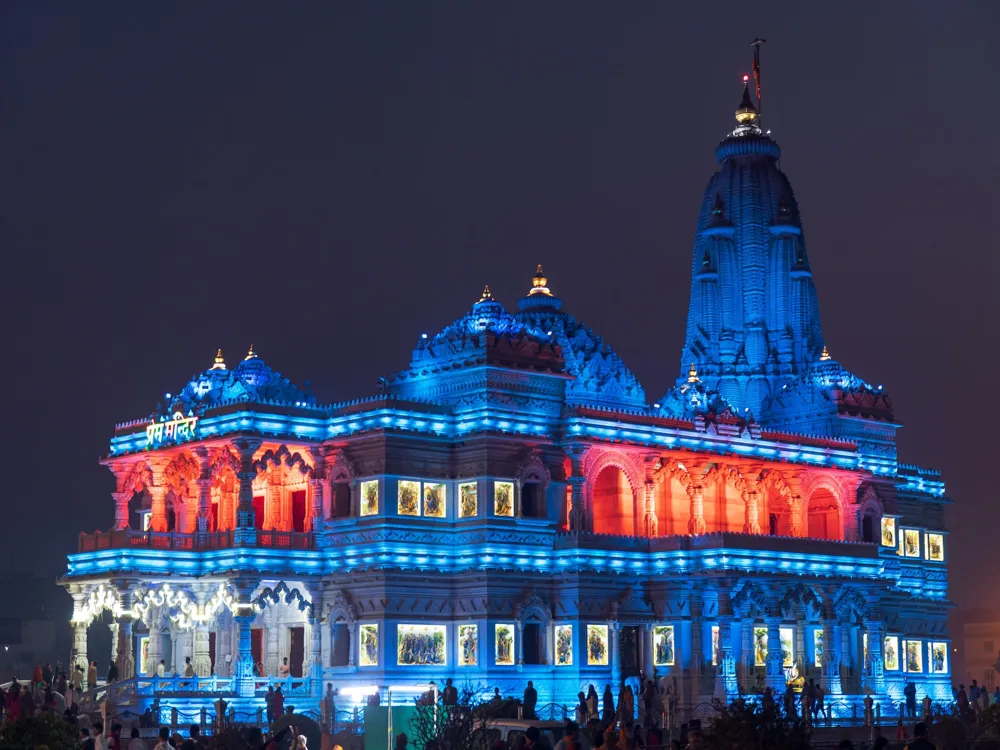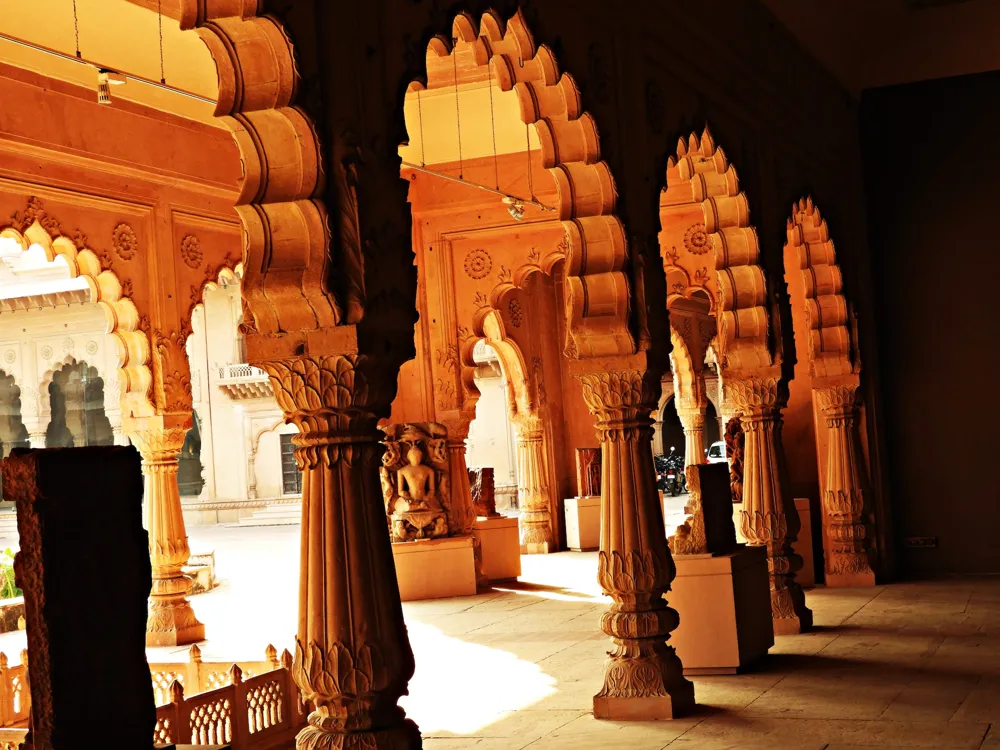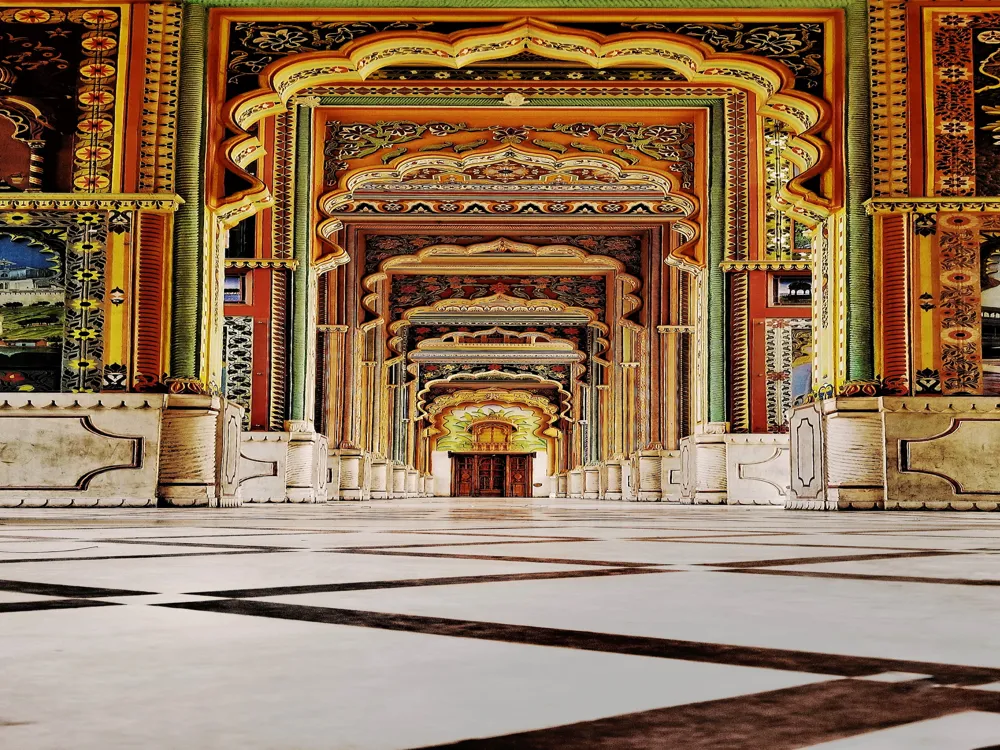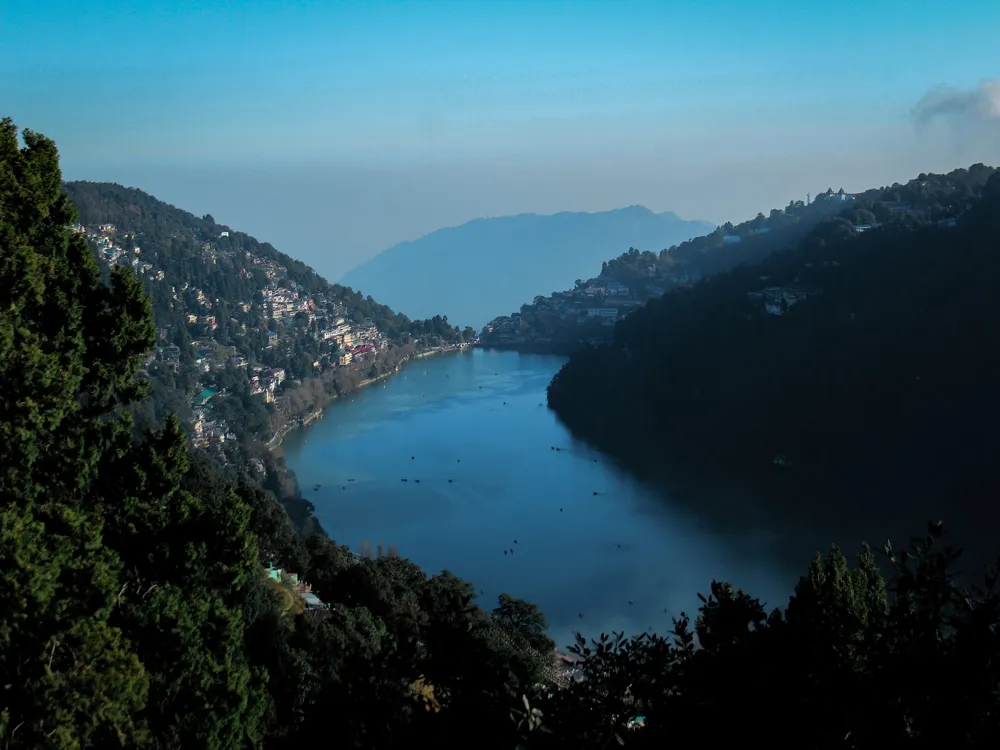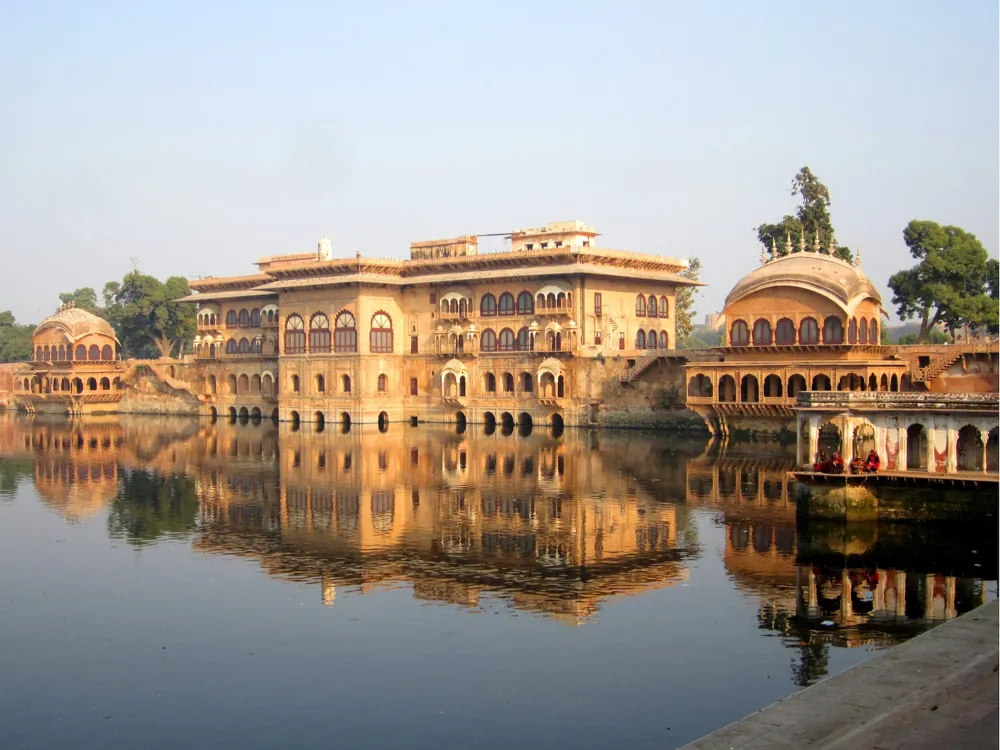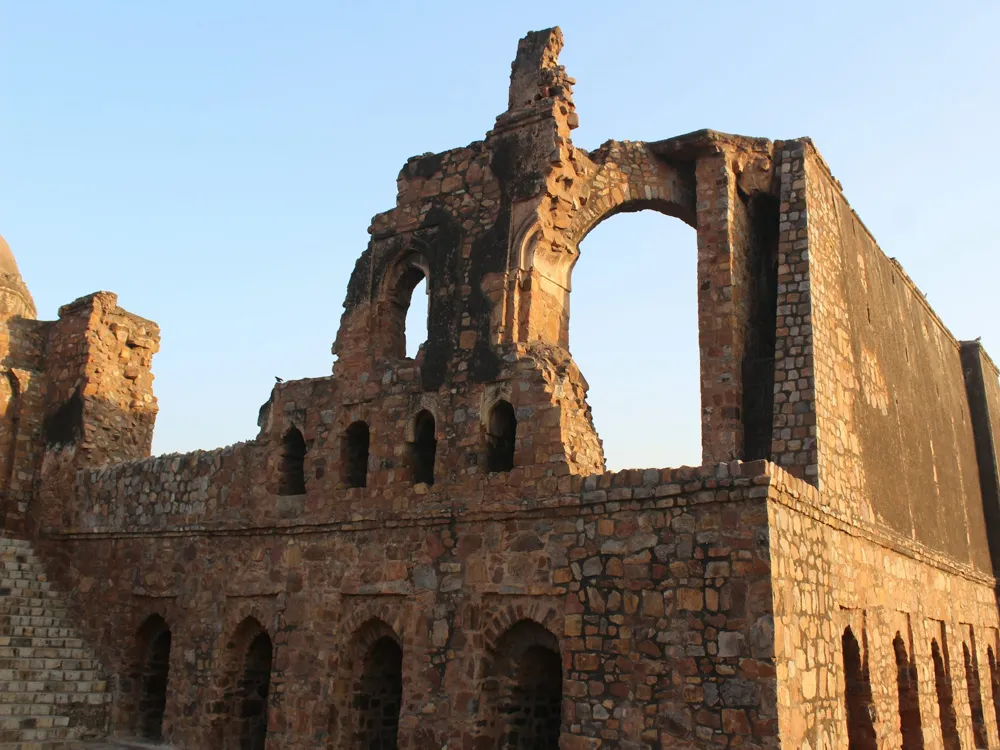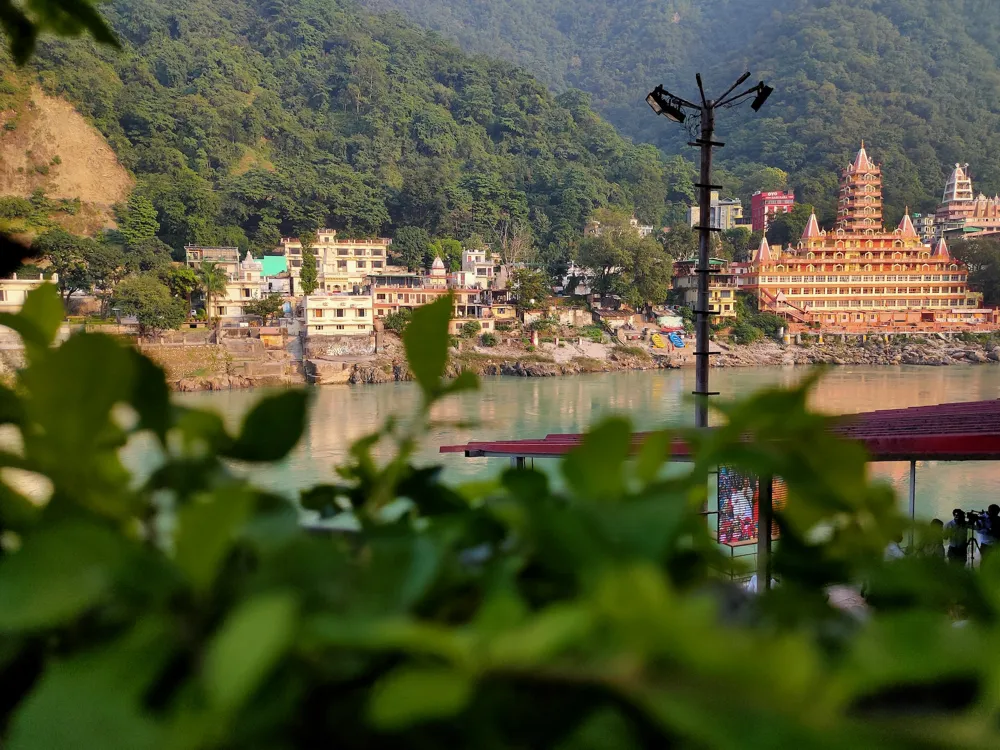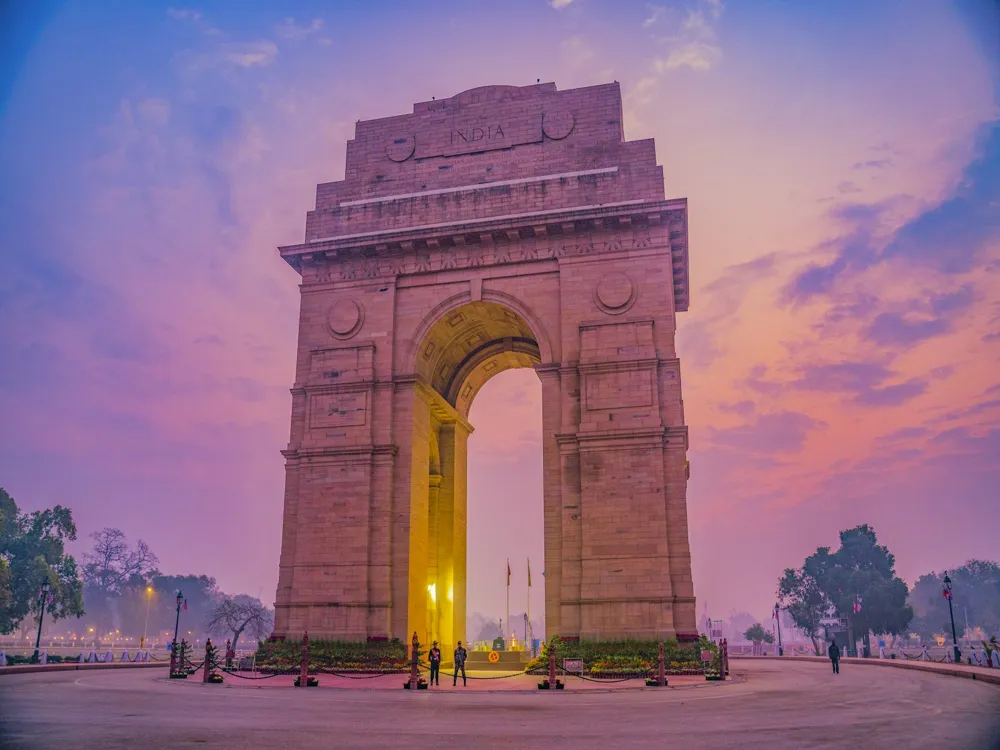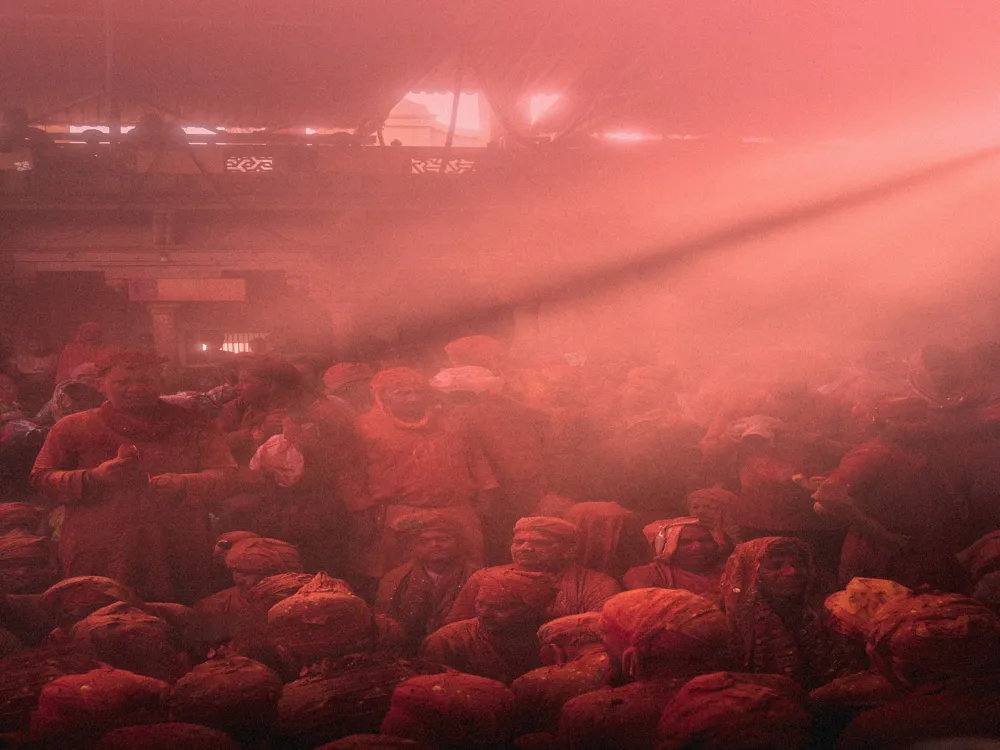The architectural splendor of Agra Fort is a harmonious mix of Islamic and Hindu design rudiments, reflective of the different artistic influences during the Mughal period. The stronghold's colossal walls, which rise over 70 bases in height, encircle an array of exquisite structures, including palaces and kirks and public and private halls. Crucial lodestones within the stronghold include the Jahangir Palace, Khas Mahal, Diwan-i-Aam, and Diwan-i-Khas. The intricate busts, extensive yards, and use of precious monuments in the decorations are admiration-inspiring. The Sheesh Mahal, adorned with thousands of glass penstocks, is particularly notable for its stunning light reflections. The Agra Fort's armature represents the zenith of Mughal creativity under Emperor Akbar's reign. The stronghold's layout is semi-circular, with its passion lying parallel to the Yamuna River. Its walls are constructed of red sandstone, brought from Rajasthan, and feature intricate busts and inlay work. The stronghold comprises several significant structures, such as the Jahangir Mahal, a mix of Hindu and Central Asian architectural styles, and the Khas Mahal, an immaculate white marble palace. The Diwan-i-Khas, or Hall of Private Followership, showcases the fine cultural taste of the Mughals with its lavish decoration and delicate inlaid work. The Moti Masjid, a white marble synagogue , exemplifies Islamic architectural prowess. The stronghold's design not only served aesthetic purposes but also strategic military functions, apparent in its robust walls, citadels, and the culvert that formerly girdled it. The ideal time to visit Agra Fort is from November to March, when the weather is pleasant. Avoid visiting during the summer months, as temperatures can be extremely high. Consider taking a guided tour to enhance your understanding of the fort's history and architecture. Licensed guides are available at the entrance. Carry your camera to capture the stunning architecture. Early morning and late afternoon light offer the best conditions for photography. The fort is accessible to visitors with disabilities, with ramps available at certain points. However, some areas may be challenging to navigate. Agra Fort is easily accessible by colorful modes of transportation. The nearest field is Agra Airport, located about 5 kilometers down. Agra Fort Railway Station is just 1 kilometer from the stronghold, making it accessible for those traveling by train. For callers coming by road, Agra is well connected to major metropolises via the Yamuna Expressway and National Highway 19. Original transportation in Agra, including motorcars, hacks, and bus cabs, can be used to reach the stronghold. Read More:Overview of Agra Fort, Uttar Pradesh
Architectural Grandeur of Agra Fort
Architecture of Agra Fort
Tips for Visiting Agra Fort
Best Time to Visit
Guided Tours
Photography Tips
Accessibility
How To Reach Agra Fort
Agra Fort
Agra
Uttar Pradesh
₹ 8,000 onwards
View agra Packages
Weather :
Label : Must Visit
Tags : Forts & Palaces
Timings : Sunrise to Sunset
Time Required : 2-3 hours
Entry Fee : Indians: INR 40
Foreigners: INR 550
Entry for children (below 15 years): Free
Entry to Agra Fort is allowed only through the Amar Singh Gate
Tips :
- Food items, liquor, tobacco, headphones, knives, wire, mobile charger, electronic goods (except camera) are prohibited
- Carry your identity cards when you visit this attraction
- Mobile phones are to be kept switched off
- It is advised to hire only approved guides and photographers with identity cards
Built In : 1565
Established By : Emperor Akbar
Planning a Trip? Ask Your Question
Also Refered As:
Lal Qila, Fort Rouge, Red Fort of Agra
Agra Travel Packages
View All Packages For Agra
Top Hotel Collections for Agra

Private Pool

Luxury Hotels

5-Star Hotels

Pet Friendly
Top Hotels Near Agra
Other Top Ranking Places In Agra
View All Places To Visit In agra
Faq on Agra
What is Agra Fort famous for?
Agra Fort is famous for its historical significance as a UNESCO World Heritage Site and for being a prime example of Mughal architecture in India. It's also renowned for its association with various Mughal emperors.
When was Agra Fort built?
Construction of Agra Fort began in 1565 by the Mughal Emperor Akbar and continued until 1573.
What is the architecture of Agra Fort like?
The architecture of Agra Fort is predominantly Mughal, characterized by red sandstone structures, intricate carvings, and marble inlays. It features a blend of Islamic, Persian, and Indian architectural styles.
Is Agra Fort open to the public?
Yes, Agra Fort is open to the public for visits. However, certain areas may have restricted access due to conservation efforts or ongoing restoration work.
How much does it cost to visit Agra Fort?
The entry fee for visiting Agra Fort varies for Indian and foreign tourists. There may be additional charges for accessing certain sections or for guided tours.
View agra Packages
Weather :
Label : Must Visit
Tags : Forts & Palaces
Timings : Sunrise to Sunset
Time Required : 2-3 hours
Entry Fee : Indians: INR 40
Foreigners: INR 550
Entry for children (below 15 years): Free
Entry to Agra Fort is allowed only through the Amar Singh Gate
Tips :
- Food items, liquor, tobacco, headphones, knives, wire, mobile charger, electronic goods (except camera) are prohibited
- Carry your identity cards when you visit this attraction
- Mobile phones are to be kept switched off
- It is advised to hire only approved guides and photographers with identity cards
Built In : 1565
Established By : Emperor Akbar
Planning a Trip? Ask Your Question
Lal Qila, Fort Rouge, Red Fort of Agra
Agra Travel Packages
View All Packages For Agra
Top Hotel Collections for Agra

Private Pool

Luxury Hotels

5-Star Hotels

Pet Friendly
Top Hotels Near Agra
Other Top Ranking Places In Agra
View All Places To Visit In agraFaq on Agra
What is Agra Fort famous for?
Agra Fort is famous for its historical significance as a UNESCO World Heritage Site and for being a prime example of Mughal architecture in India. It's also renowned for its association with various Mughal emperors.
When was Agra Fort built?
Construction of Agra Fort began in 1565 by the Mughal Emperor Akbar and continued until 1573.
What is the architecture of Agra Fort like?
The architecture of Agra Fort is predominantly Mughal, characterized by red sandstone structures, intricate carvings, and marble inlays. It features a blend of Islamic, Persian, and Indian architectural styles.
Is Agra Fort open to the public?
Yes, Agra Fort is open to the public for visits. However, certain areas may have restricted access due to conservation efforts or ongoing restoration work.
How much does it cost to visit Agra Fort?
The entry fee for visiting Agra Fort varies for Indian and foreign tourists. There may be additional charges for accessing certain sections or for guided tours.





